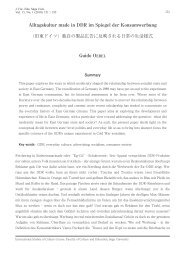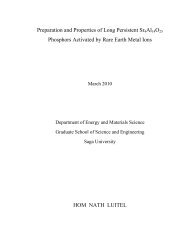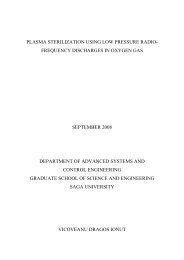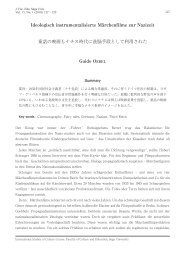High Order Harmonic Oscillators in Microwave and Millimeter-wave ...
High Order Harmonic Oscillators in Microwave and Millimeter-wave ...
High Order Harmonic Oscillators in Microwave and Millimeter-wave ...
- No tags were found...
Create successful ePaper yourself
Turn your PDF publications into a flip-book with our unique Google optimized e-Paper software.
2 <strong>Oscillators</strong><br />
• AM <strong>and</strong> FM noise (specified <strong>in</strong> dBc/Hz below carrier, offset from carrier)<br />
• frequency stability (specified <strong>in</strong> PPM/ ◦ C)<br />
2.2 Feedback Oscillator<br />
In the most general sense, an oscillator is a nonl<strong>in</strong>ear circuit that converts DC power<br />
to an AC <strong>wave</strong> form. In this study, a feedback oscillator described <strong>in</strong> chapter 5 <strong>and</strong> a<br />
negative resistance oscillator described <strong>in</strong> chapter 3, 4, 6 are adopted. In this section, the<br />
feedback oscillator which is used from low frequency to micro<strong>wave</strong> b<strong>and</strong> is expla<strong>in</strong>ed. Most<br />
micro<strong>wave</strong> <strong>and</strong> millimeter-<strong>wave</strong> oscillators provide s<strong>in</strong>usoidal outputs, which m<strong>in</strong>imizes<br />
undesired harmonics <strong>and</strong> noise sideb<strong>and</strong>s. The basic conceptual operation of s<strong>in</strong>usoidal<br />
oscillator can be described with the l<strong>in</strong>ear feedback circuit shown <strong>in</strong> Fig. 2.1. An amplifier<br />
with voltage ga<strong>in</strong> <strong>in</strong> ‘A’ has an output voltage V 0 . This voltage passes through a feedback<br />
network with a frequency dependent transfer function H(ω), <strong>and</strong> is added to the <strong>in</strong>put V i<br />
of the circuit. Thus the output voltage can be expressed as<br />
V 0 (ω) = AV i (ω) + H(ω)AV 0 (ω), (2.1)<br />
which can be solved to yield the output voltage <strong>in</strong> terms of the <strong>in</strong>put voltage as<br />
V 0 (ω) =<br />
A<br />
1 − AH(ω) V i(ω). (2.2)<br />
Vi(ω)<br />
A<br />
V0(ω)<br />
H(ω)<br />
Fig. 2.1: Block diagram of a s<strong>in</strong>usoidal oscillator us<strong>in</strong>g an amplifier with a frequency<br />
dependent feedback path.<br />
9







